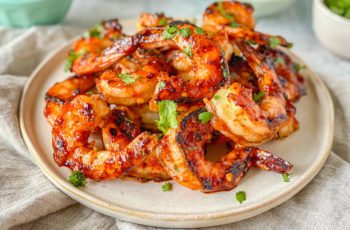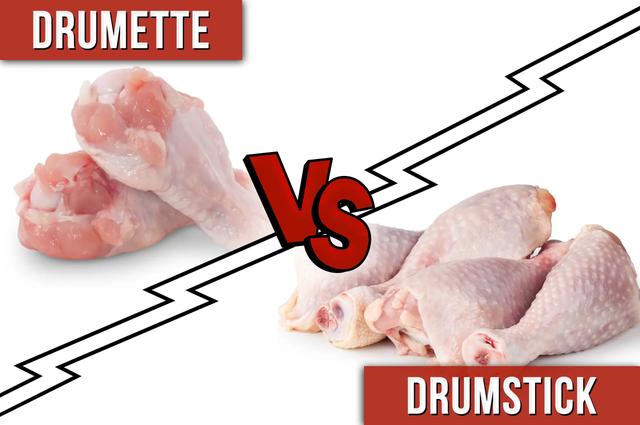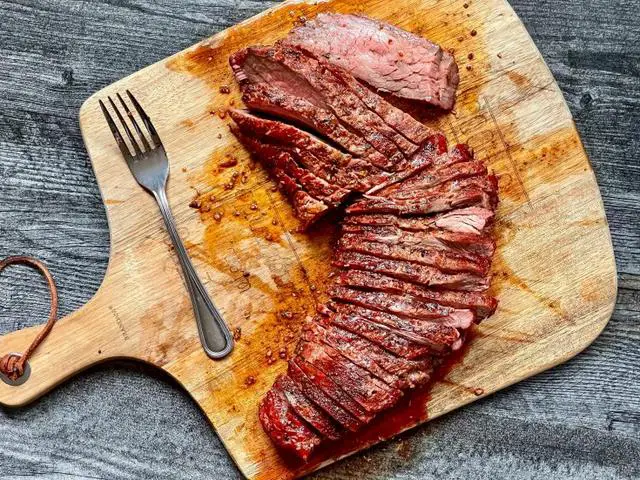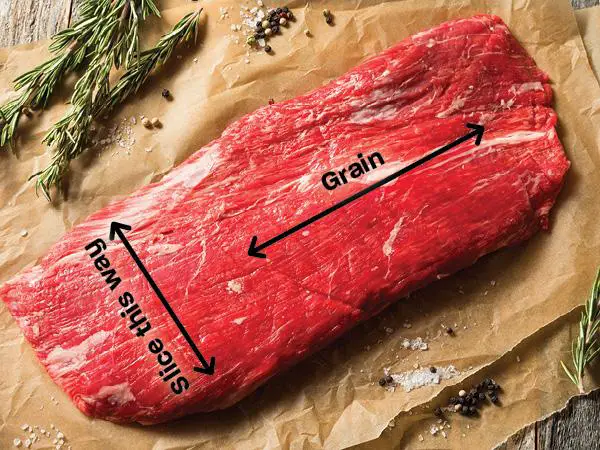
“Master the art of cutting meat against the grain with our expert tips and techniques. Discover how this simple yet crucial method can enhance tenderness and juiciness in your dishes, ensuring a delightful dining experience every time. Elevate your culinary skills and achieve restaurant-quality results effortlessly.”
Cutting Meat Against the Grain: How and Why Explained

When cutting meat against the grain, you are effectively shortening the muscle fiber lengths and making it easier for your teeth to separate the meat. By understanding muscle anatomy and composition, you can identify the direction of the grain in order to slice the meat correctly. The grain refers to the direction in which muscle fibers form, similar to the growth pattern of a tree in the wood industry. On working muscles like flank steak or rump roast, the grain structure is clearly defined, making it easy to determine the direction to slice.
However, on smaller muscles like loin or tenderloin, where muscle fibers are fine and harder to identify, slicing against the grain may not be as crucial. Regardless of the direction you slice on these weaker muscles, the bite will still be soft and tender. It’s important to note that grain is more apparent on raw meat than cooked meat. The goal of cutting against the grain is to shorten muscle fibers as much as possible to enhance chewing ease.
A quantitative analysis conducted by America’s Test Kitchen using a CT3 texture analyzer demonstrated that cutting with or against the grain requires different amounts of force. On working muscles like flank steak, 4.5 times more force is needed when cutting with the grain compared to against it. However, on weaker muscles like strip loin, only 1.79 times more force is required when cutting with the grain.
What is Meat “Grain”?
Meat “grain” refers to the direction in which the muscle fibers are aligned within a cut of meat. The grain structure of meat is similar to the growth pattern of wood in trees. In beef, poultry, pork, and lamb, muscle fibers are long strands that form a specific direction. This grain structure can be more pronounced in working muscles like flank steak or rump roast, where the muscle fiber bundles are thicker.
Cutting meat against the grain is important because it improves the eating experience by making the meat more tender. When you slice perpendicular (90 degrees) to the grain, you effectively shorten the length of the muscle fibers. This makes it easier for your teeth to separate and chew the meat. By cutting against the grain, you reduce the amount of force needed to break down the muscle fibers, resulting in a more enjoyable and tender bite.
To identify and cut against the grain, it helps to have an understanding of muscle anatomy and composition. On larger cuts of meat like flank steak or rump roast, the grain structure or muscle fibers are clearly defined and easy to determine. You can slice across these visible lines to cut against the grain. However, on smaller, weaker muscles like loin or tenderloin, where the muscle fibers are fine and harder to identify, cutting against or with the grain may not make much difference in tenderness. It is recommended to slice raw meat against the grain as it is more apparent than on cooked meat.
How to Identify the Grain Direction
To identify the grain direction of meat, it is important to understand the muscle anatomy and composition. Muscle tissues are made up of bundles of cells called muscle fibers or fascicles. These fibers are grouped into muscle bundles composed of myofibrils, which are made up of proteins like actin and myosin. The direction in which these muscle fibers form is known as the grain.
In larger working muscles like flank steak or rump roast, the grain structure is more pronounced and easily identifiable. The muscle fibers are long strands that can be seen clearly. However, in smaller and weaker muscles like loin or tenderloin, the grain direction may be harder to determine as the muscle fibers are very fine.
One way to identify the grain direction is by looking at raw meat rather than cooked meat. The goal is to cut against the grain, perpendicular (90 degrees) to it, in order to shorten the muscle fiber lengths and make chewing easier. When slicing with the grain, it requires much more force to chew compared to slicing against the grain.
Why is Meat Cut Against the Grain?
Meat is cut against the grain in order to improve the eating experience. When working with beef primals like flank steak or rump roast, the muscle fibers are clearly defined. By cutting the meat against the grain, specifically perpendicular (90 degrees) to the grain, you effectively shorten the muscle fiber lengths. This makes it easier for your teeth to separate and chew the meat.
The grain of meat refers to the direction in which the muscle fibers form. Muscle tissues are comprised of bundles of cells called muscle fibers or fascicles, which are grouped into muscle bundles composed of myofibrils. These myofibrils are made up of proteins such as actin and myosin. The direction in which these muscle fibers form is referred to as the grain.
When slicing meat against the grain, you are essentially cutting across these long strands of muscle fibers, shortening them and making them easier to chew. This is similar to how wood or lumber has a grain that describes its growth pattern. However, on smaller and weaker muscles like loin or tenderloin, where the muscle fibers are very fine, it may be harder to identify and determine the direction of the grain. Nevertheless, regardless of the direction you slice these muscles, they will still be soft and tender.
What Happens if You Slice Parallel to the Grain?

If you slice meat parallel to the grain, it will result in a chewy mouthfeel and require more effort to break down. The muscle fibers are not shortened when sliced parallel to the grain, making it more difficult for your teeth to separate the meat. This can lead to a less enjoyable eating experience.
When meat is sliced parallel to the grain, the muscle fibers remain long and intact. This can make the meat tougher and more resistant to chewing. It may require additional force and time to break down the meat in your mouth, resulting in a less tender texture.
Are Grill Marks the Same as the Grain?
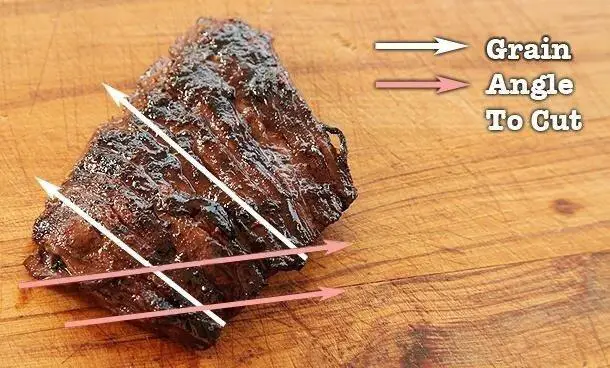
Grill marks on meat have nothing to do with the grain structure of the meat. The presence of grill marks is simply a result of the Maillard reaction, which occurs when amino acids and sugars in the meat react to heat. This reaction creates those distinct browned lines on grilled meat. However, it is important to note that grill marks do not indicate the direction of the grain in the meat.
Slicing against the grain is important because it makes the meat more tender and enhances the eating experience. When you cut against or perpendicular to the grain, you effectively shorten the length of muscle fibers, making it easier for your teeth to separate and chew through the meat. This results in a more enjoyable texture and reduces any potential chewiness that may occur when slicing parallel to the grain. It’s especially crucial for working muscles like flank steak or rump roast where muscle fibers are more pronounced.
In contrast to beef, slicing against or perpendicular to the grain doesn’t have as much impact on chicken meat. Chicken breast muscles have a different disposition compared to beef, pork, or lamb, with finer muscle fibers that are naturally tender regardless of slicing direction. While it’s still recommended to slice against the grain for optimal tenderness, slicing techniques like on a bias, vertically or even with can still result in a tender mouthfeel due to chicken’s inherent muscle structure.
Does Poultry have a Grain Structure?
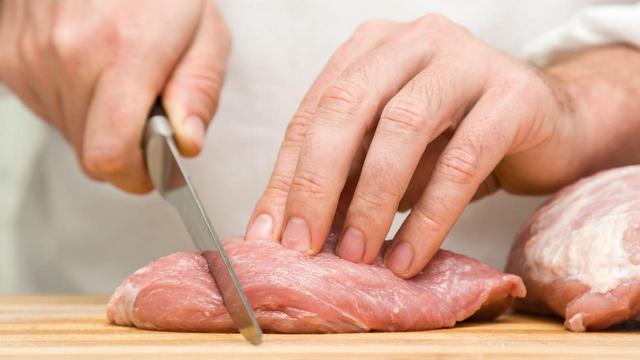
Poultry, such as chicken, does have a grain structure, although it is not as pronounced as in beef or other meats. The muscle fibers in chicken breasts are more delicate and fine compared to working muscles like the flank or rump roast. While the grain structure of chicken may not be as apparent, slicing against the grain can still help improve the tenderness of the meat.
When slicing poultry, it is not necessary to be overly precise with the cutting angle. The grain/striations in chicken breasts often curve, making it difficult to determine an exact direction. Slicing against the grain with chicken doesn’t seem to have a significant impact on tenderness compared to other meats. Regardless of how you slice it, chicken breast meat tends to be naturally tender due to its muscle disposition.
Final Thoughts
When it comes to cutting meat against the grain, the goal is to improve the eating experience by making the meat more tender and easier to chew. By cutting perpendicular to the muscle fibers, you effectively shorten their length, allowing your teeth to easily separate the meat. This technique is especially important for working beef primals like flank steak or rump roast, where the grain structure is pronounced and easily identifiable.
While it may be harder to determine the grain direction on smaller, weaker muscles like loin or tenderloin, slicing against the grain still results in a soft and tender bite. It’s worth noting that raw meat shows the grain more clearly than cooked meat, so it’s easier to identify and cut against the grain when preparing raw meat.
A quantitative analysis conducted by America’s Test Kitchen further supports the benefits of cutting against the grain. Their test showed that significantly less force is required to chew meat sliced against the grain compared to with the grain. However, it’s not necessary to use a protractor or be exact with cutting angles; simply slicing perpendicular to the grain will suffice in most cases.
In conclusion, cutting meat against the grain is a simple yet effective technique that can greatly enhance the tenderness and flavor of your dishes. By identifying the direction of the muscle fibers and slicing perpendicular to them, you can create more tender and enjoyable meat experiences. So next time you’re preparing meat, remember to cut against the grain for a delicious outcome.
Learn More About Grilling
If you want to learn more about grilling, check out these other helpful resources!


